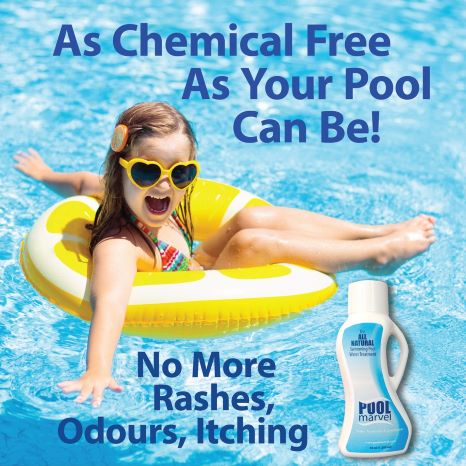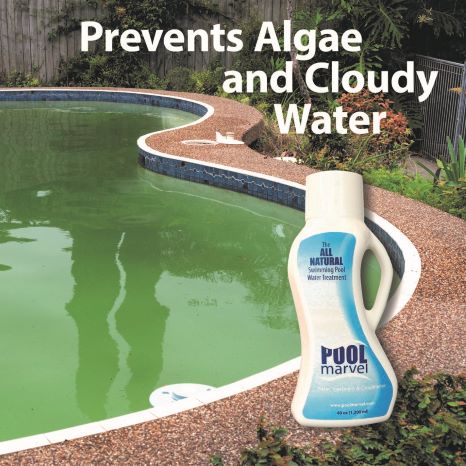
Cyanuric Acid
Cyanuric acid (CYA) is a common pool chemical that prevents free chlorine loss from the sun’s ultraviolet rays. It’s also known as a pool water stabilizer or conditioner. When the proper amount of cyanuric acid is present in pool water, chlorine works more effectively at maintaining a clean, safe swimming environment.
The Importance Of Cyanuric Acid
In its natural state, chlorine is unstabilized, which causes it to degrade in sunlight. Cyanuric acid works by creating a weak, temporary bond with chlorine in pool water. The bond protects the chlorine from sunlight and lasts until the chlorine is consumed by the oxidation or disinfection of pool water contaminants. Cyanuric acid will not be consumed and eventually builds up in pool water.
Cyanuric acid offers multiple benefits – including holding onto free chlorine and protecting chlorine from the sun. It does this with little effect on a pool’s pH, alkalinity, or hardness.
Maintaining proper CYA levels results in less effort and investment in managing pool water chemistry. Free chlorine will quickly be consumed without a stabilizer, leaving the pool unprotected and creating an unsafe swimming environment. In only two hours of sunlight, 75-90 percent of your pool’s chlorine can be destroyed. When exposed to direct sunlight, the half-life of chlorine is approximately 45 minutes.
Maintaining Proper CYA Pool Levels
To reap the benefits of cyanuric acid, the proper level must be maintained. The appropriate level will depend on the size of your pool and the amount of chlorine.
Ensure your free chlorine levels are 7.5 percent of your cyanuric acid levels. Generally, the ideal level for cyanuric acid in pool water is 30-50 ppm. More stabilizer is necessary for saltwater pools and pools in areas with high sunlight levels. In these situations, the CYA pool levels should be 60-80ppm.
If you have an indoor pool, you don’t need to use cyanuric acid unless there is exposure to sunlight.
The Effects Of Improper CYA Levels
Low Cyanuric Acid in Pools
When cyanuric acid is low in pool water, you’ll begin seeing undesirable side effects on your water chemistry. The increased chlorine consumption will cause chlorine levels to drop, affecting your pool’s pH and total alkalinity. Chlorine will become less effective due to sunlight consumption, and algae growth may occur.
In addition, the increase in combined chlorine (chloramines) creates less sanitized water and a pungent chlorine smell.
High Cyanuric Acid in Pools
If you have a high amount of cyanuric acid in pool water, chlorine does not work as effectively. The amount of time necessary to kill bacteria lengthens as the CYA level increases, which can impact a swimmer’s health.
High CYA levels can provide false alkalinity readings and often correlate with low pH. If you have a plaster finish on your pool, damage can result.
Which Chlorine Type Contains Cyanuric Acid?
Dichloro-s-triazinetrione (Dichlor) and Trichloro-s-triazinetrione (Trichlor) are stabilized pool chlorine types which will automatically raise your CYA levels.
Which Chlorine Type Does Not Contain Cyanuric Acid?
Non-stabilized pool chlorine products include Sodium Hypochlorite (liquid chlorine), Calcium Hypochlorite (cal hypo), Lithium Hypochlorite (lithium hypo), Saltwater Generated Chlorine (salt system, or SWG), and Chlorine Gas (Cl2). These types of chlorine products do not contain cyanuric acid.
Using an unstabilized chlorine shock without CYA can help prevent adding unnecessary CYA during each shock treatment.
How To Test CYA Levels In Pool Water
Unlike free chlorine, your CYA levels should remain constant day-to-day. The only exception is if a heavy rain storm occurs and your pool’s left uncovered. You should test your CYA levels once per week.
Pool water test kits and strips can accurately and efficiently test cyanuric acid levels in pool water.
Testing CYA Levels with Pool Test Strips
Ensure the test strips you purchase include a test for cyanuric acid. Thoroughly read the instructions before completing the test.
In general, the instructions for testing CYA levels in pool water using test strips are as follows:
1. Submerge the test strip in your pool for at least 30 seconds.
2. Wait at least one minute for the water to react with the reagents on the test strip.
3. Compare the colour of test strip results with the range of colours on the test strip package to receive an estimate of the present CYA levels.
4. Adjust the water as needed and retest.
CYA levels at or above 100ppm may not generate an accurate reading on a test strip and will require a water sample to be taken to your pool supply store.
Testing CYA Levels with a Turbidity Testing Kit
1. Fill the plastic vessel with the indicated amount of pool water in the test instructions.
2. Add one packet of the chemical reagent into the sample water.
3. Gently mix the powder using the provided spoon or stirring rod until it dissolves.
4. Wait one minute for the reagent to react with the cyanuric acid in the pool water.
5. Use a pipette to transfer the resulting solution into the test tube one drop at a time. Stop adding water when the black dot is no longer visible on the bottom of the tube when you’re viewing the tube from the top.
6. Check the liquid level to identify the cyanuric acid concentration in your sample.
7. If the CYA levels are too high or too low, repeat the test, measuring only 20ml of pool water. Add 20ml of distilled water to the sample water, then combine. Repeat steps 2-6 using the newly prepared diluted sample.
8. Adjust the water as needed and retest.
When To Add Cyanuric Acid To Your Pool
Lowering cyanuric acid is most commonly necessary when unstabilized chlorine has been used in your pool. Water evaporation, a large splashout that requires refilling the pool, or a heavy rain storm can cause a decrease in your pool’s CYA levels.
Low cyanuric acid levels can also result from draining and refilling your pool with fresh water.
How To Add Stabilizer To Pool Water
Increasing the cyanuric acid in pools can be done using one of two methods:
Method #1: Using Stabilized Chlorine
1. Calculate how much chlorine to add to your pool water to reach the ideal range of 1-3ppm.
2. Wearing protective eyewear and clothing, add the measured amount of stabilized chlorine to your pool appropriately.
3. Wait until the water has fully cycled through your pump, then retest your pool water. Adjust the chlorine or CYA levels if necessary.
Method #2: Using Pure Cyanuric Acid
1. Put on protective eyewear and chemically resistant rubber gloves. Wear long sleeves and pants.
2. Test and balance your pool water.
3. To calculate how much cyanuric acid to add to your pool water, read the dosage instructions on the product.
4. Fill a five-gallon pail with warm water.
5. Add the cyanuric acid to the pail.
6. Pour the mixture directly into your skimmer.
7. Wait until the pool fully cycles the water and distributes the cyanuric acid.
8. Retest the pool water and adjust the CYA levels if necessary.
Lowering Cyanuric Acid Levels
When your CYA levels are too high (way above 50ppm), you’ll need to use one of the following methods to lower them:
1. Water Dilution: Draining the pool and refilling it with fresh water is the most common method for reducing cyanuric acid in pool water.
2. CYA Reducer: Certain products are available to reduce CYA levels. Although typically easy to add to pool water, CYA reducers can be expensive. You also must wait a minimum of one week if an additional application is necessary.
3. Reverse Osmosis System: This specialized filter system purifies and recycles pool water while reducing calcium hardness and total dissolved solids. However, it is costly.
If your cyanuric acid is at a reasonable level or less than 100ppm, it may be easier to raise free chlorine than replace water. Use a pool calculator to determine how much chlorine is necessary to add based on the present CYA levels.


